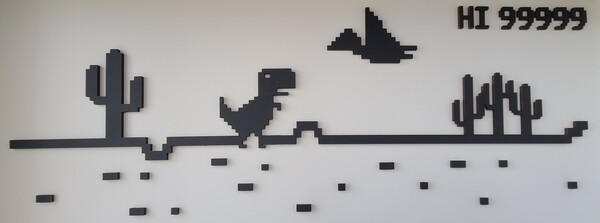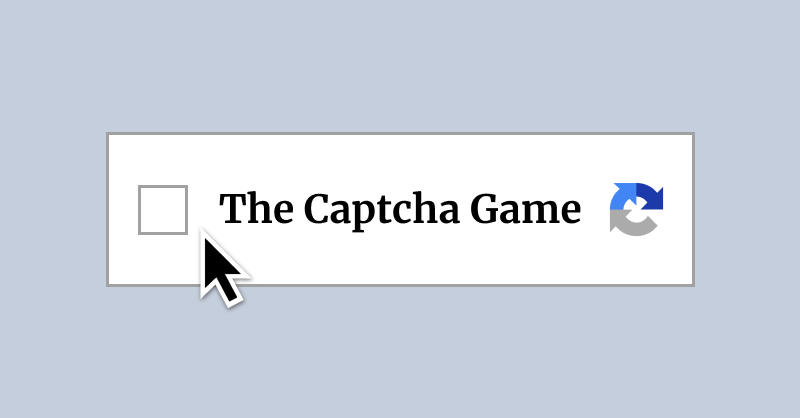Ride the waveform to the beat
Sharpen wave control and rhythm timing as you pilot a pulse-driven ship through razor-thin tunnels. Hold to climb, release to dive, use checkpoints, chase PBs.
Keep exploring
Keep your night shift energy up with more browser horror, tense escape rooms, and quick palate cleansers we trust.

Dino Game — Sprint, Jump, Repeat
Dino Game — Sprint, Jump, Repeat

Beat Verification at Arcade Speed
Beat Verification at Arcade Speed

Take Care of Your Own Burning Spice | Cozy Cookie Run Pet Sim
Take Care of Your Own Burning Spice | Cozy Cookie Run Pet Sim

Spam your way to steadier wave control
Spam your way to steadier wave control

Check the box—then survive the chaos
Check the box—then survive the chaos

Play Sort the Court! Free in Your Browser
Play Sort the Court! Free in Your Browser

Fire a stunt dummy into the sky
Fire a stunt dummy into the sky

Corporate layoffs, meet ragdoll chaos
Corporate layoffs, meet ragdoll chaos

Your routine is the experiment
Your routine is the experiment

Rocket-Packed Kart Battles in Your Browser
Rocket-Packed Kart Battles in Your Browser
Wave mechanics, clear feedback, and fast practice loops
Follow the rhythm, master the angle
This focused browser challenge extracts the iconic wave segments from the broader cube-and-ship platform rhythm series and turns them into a compact, learnable loop. Your craft climbs when you hold and dives when you release. There is no inertia to hide behind: every micro-tap becomes a steering decision, every pulse of the soundtrack becomes a timing cue, and every corridor demands precise angle control. Because inputs translate instantly, improvement is visible from one attempt to the next, making this mode ideal for quick warm-ups, mechanical drills, or a full score grind when you are in the zone.
Why this mode is so addictive
Acceleration is immediate, obstacles tend to appear in musical phrases, and retries are near-instant. That trifecta means you can learn difficult shapes—saw-tooth tunnels, staircase zigs, and micro-gap bursts—by leaning on rhythm first, then refining the line with lighter or longer presses. Over time your eyes begin to read upcoming patterns one or two beats ahead, and your hands learn to translate that anticipation into tiny pulses that place the nose of the ship exactly where it needs to be.
How to read patterns like a pro
Start by scanning the next two screens rather than fixating on the ship. Look for repeating motifs: diagonal ladders, alternating narrow-wide arcs, and false ‘breathing’ spaces that lure you into releasing too early. Treat the beat as a metronome. On new layouts, count out loud or in your head—“one-and-two-and”—and map each press or release to that internal clock. If a section feels chaotic, reduce speed (if the level provides options) or switch to a practice checkpoint to isolate the problem bar, then rebuild the phrase at full tempo once the motion is automatic.
Micro-tapping vs. controlled holds
Two mechanics define good runs. First, micro-tapping: feather the input so the craft nudges along an almost flat path through micro-gaps. Second, controlled holds: for steep climbs and dives, hold a fraction longer to swing the wave into a clean diagonal, then release exactly at the corner to avoid clipping. Alternating between these styles within a single phrase is the essence of high-level play.
Practice structure that actually works
Short sessions are incredibly productive when they follow a simple structure: warm up on generous tunnels, drill one difficult motif, then finish with a full clear attempt. Use checkpoints to loop the specific hazard that consistently ends your run. Shuffle difficulty: easy → hard → medium. That order spikes your focus, prevents plateauing, and ends the session with a confidence-building success rather than a wall.
A 10-minute routine you can repeat daily
Minute 0–2: free flow on entry-level corridors, aim for relaxed wrists and smooth breathing. Minute 2–6: choose one obstacle pattern (e.g., triple zig or saw-step) and loop it with minimal variance until you can clear five times consecutively. Minute 6–8: tempo bursts—play a short, fast sequence and chase consistency, not just a single lucky pass. Minute 8–10: one or two full runs at your current target difficulty, saving replays when available to review lines later.
Reading common obstacle shapes
Staircases: think in press–release pairs. The rhythm is often even, but the windows tighten at the top. Saw-teeth: exaggerate the ‘over’ portion with a slightly longer hold, then cut the ‘under’ with two feather taps instead of one long drift. Micro-gaps: lock your elbow and generate motion from your fingertips; posture matters here more than anywhere. Fake rests: if a tunnel widens momentarily before narrowing sharply, prepare a quick double input to prevent an under-swing.
Device, input, and setup tips
Latency compounds small errors. Close background tabs, disable heavy overlays, and prefer a high-refresh display when possible. On keyboard, use a light touch and keep your thumb or index finger centered on a single key to minimize travel. On mouse or touchscreen, rest your palm so only the finger moves; hovering adds jitter. If the site offers a frame-rate toggle, pick the smoothest option your hardware can sustain consistently—not the absolute highest peak.
From training tool to full game preparation
Because the craft responds exactly to hold and release, your timing muscles transfer directly into other rhythm-platform sections that feature ship control. Treat this as a laboratory: practice on exaggerated versions of the patterns you struggle with in full levels. When you return to a complete stage, you will find the hardest bars suddenly feel readable. Many players use a few warm-up clears here before attempting demon-level challenges elsewhere because it primes both timing and confidence.
Checkpoint strategy that saves time
Dropping a checkpoint after a tricky opening is tempting, but you will often get better overall gains by placing it one beat before the problem rather than directly on it. That lets your hands rehearse the lead-in motion and the first recovery input after the hazard, creating a continuous phrase. When you finally remove the checkpoint, the muscle memory holds.
Mindset: relaxed focus beats brute force
Most crashes come from tension. If your shoulders creep upward or your grip tightens, take thirty seconds to reset: shake out your hands, blink rapidly to refresh your eyes, and breathe on a four-count in and six-count out for one cycle. Aim for deliberate, calm taps. The moment your inputs feel ‘late,’ stop chasing a clear and switch to pattern drills for two minutes to rebuild control.
Plateau breakers
Rotate maps with different visual rhythms, invert your color theme if available to reduce visual fatigue, and experiment with counting subdivisions (e.g., triplets) for off-beat sequences. Another powerful trick is ghosting: run a section without looking directly at the ship, using peripheral vision to maintain line while your focus stays on the next hazard. This builds trust in your hands and reduces over-correction.
Who this mode is perfect for
If you are brand new, you get a clear, forgiving space to learn the relationship between input length and angle. If you already clear mid-tier content, you gain a fast mechanical tune-up before serious attempts. If you chase world-class precision, you will appreciate the immediate feedback loop and the ability to script repeatable drills on the exact pattern that blocks progress.
Quick FAQ
Is there pay-to-win gear? No—skill and consistency are all that matter. Are checkpoints mandatory? Not at all, but they speed up learning. What if my device is old? Lower visual effects if that option exists, close heavy apps, and focus on rhythm; most layouts are still very playable.
Safety, comfort, and long-term endurance
Precision tapping can be rough on hands when overdone. Set a 20-minute hard cap for any session, take a brief break every 7–8 minutes, and stretch wrists gently between runs. Keep your display at eye level to avoid neck strain. Consistency grows faster from frequent short sessions than from marathon grinding.
Turning clears into personal bests
Track the sections that usually end your runs and aim to reduce them to one ‘problem’ per session. Celebrate micro-wins: cleaner lines, fewer over-corrections, steadier breathing. When a choke happens near the finish, review what changed in the last four beats—most players either speed up tapping or stop trusting the established rhythm. Name the mistake, then immediately replay the final phrase with calm inputs to overwrite the memory.
Final thought: precision is a rhythm you learn
Great runs are not about frantic motion. They come from a steady internal tempo, light hands, and small choices repeated cleanly. Let the soundtrack do some of the work—ride its pulse, translate beats into angles, and you will feel control click into place. Whether you use this as a two-minute warm-up or a nightly high-score chase, the combination of instant feedback and musical flow makes each session satisfying. Press to rise, release to dive, and enjoy the clean arc when everything lines up.
Share Ride the waveform to the beat
Spread the word, invite friends, or bookmark this page to revisit the story whenever you need it.